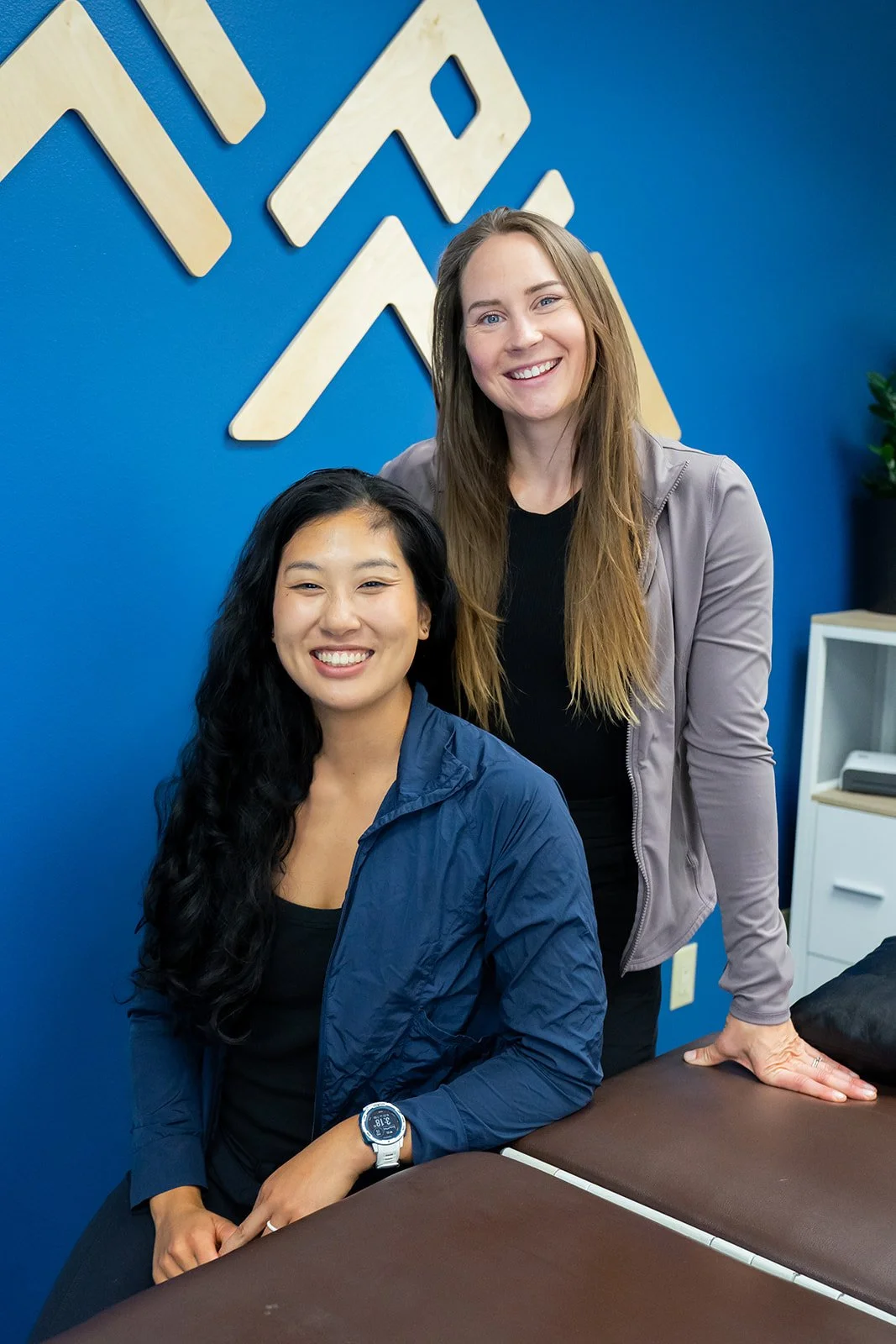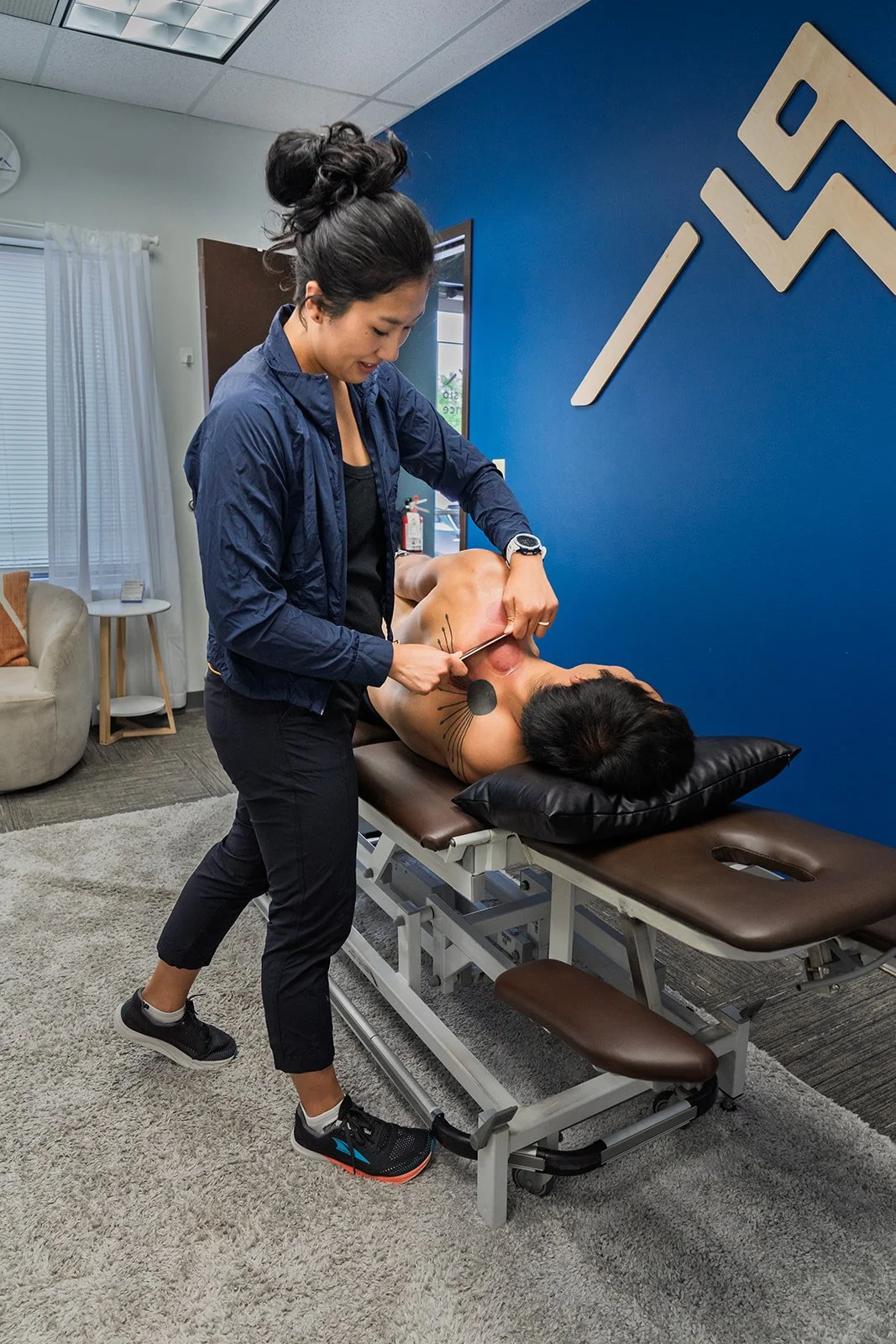
Who We Are
Summit Physio & Performance, located in Colorado Springs, CO, is a performance-oriented physical therapy practice. Our PTs are Dr. Tessa Kothe, DPT, and Dr. Cat Cui, DPT.
We are currently operating out of a suite located inside CrossFit Tava. Our dedicated team delivers outstanding care to our patients in the field of orthopedics. As an out-of-network provider, we prioritize individualized, high-quality treatment tailored to each patient’s goals.
Who Work With
Athletes, CrossFitters, weightlifters, active clients and those who are highly motivated to meet their goals!
Those who want to get ahead of injury & stay active!
Motivated active adults that want to bounce back from injury stronger & more resilient!
Clients who are wanting high-quality one-on-one care from a doctor of physical therapy!
Learn More About Our Services
-
Joint mobilization is a hands-on technique that involves moving joints through targeted ranges joint ranges of motion. Manipulation is a quick, controlled thrust to a joint, typically in the spine or extremities. The goal is to improve joint mobility, reduce pain, and restore normal movement patterns. It often produces a “popping” or “cracking” sound due to gas being released from the joint, similar to cracking your knuckles. Unlike general stretching or mobilization, manipulation is a high-velocity, low-amplitude (HVLA) movement and requires specific training to perform safely and effectively. These techniques play a large role in improving joint restriction, pain, mobility, stiffness, and can greatly improve function and movement quality.
-
Dry needling is a targeted physical therapy technique that uses thin, sterile needles to address muscle pain, tightness, and movement dysfunction. Unlike acupuncture, which is rooted in traditional Chinese medicine, dry needling is based on modern Western medical principles and focuses on treating specific musculoskeletal issues. Dry needling targets tight or painful muscles or connective tissue restrictions, joints, or nerves and it helps reset pain signals, reduce tension, and restore function. It also increases blood flow to support healing.
We often combine it with electrical stimulation (E-Stim) to further reduce pain, enhance muscle activation, reduce post-treatment soreness, and speed up recovery. This approach is especially helpful for athletes, injury recovery, and chronic muscle tightness.
Learn more on our blog at Summit Physio & Performance.
-
We use manual therapy to assess and treat soft tissues like muscles, fascia (the connective tissue around muscles), and tendons. It includes techniques like soft tissue massage, trigger point release, and myofascial release—where gentle, sustained pressure is applied to stretch and loosen restricted areas. The goal is to reduce muscle tension, improve circulation, address scar tissue or adhesions, and restore normal movement patterns. These techniques can also calm the nervous system and decrease pain sensitivity, helping patients move more freely and recover more quickly from injuries or overuse. Manual therapy is often used in combination with exercise and mobility work to enhance outcomes and get you back to your activities faster and with less discomfort.
-
MFD is an innovative therapy technique that combines cupping therapy with movement-based interventions. This unique approach helps to relieve pain, improve mobility, and enhance athletic performance by targeting the fascia, the connective tissue that surrounds muscles and organs. MFD uses specialized cups to create suction on the skin, lifting the fascia and underlying tissues. This decompression effect increases blood flow, reduces muscle tension, and promotes healing. Combined with specific movements, MFD can effectively address musculoskeletal issues and optimize physical function.
-
This technique uses specialized metal tools to gently scrape the skin over tight or sore areas. It’s a soft tissue treatment designed to promote healing by breaking up muscle knots and releasing restrictions in the fascia. Often performed after myofascial decompression (cupping), this method helps realign muscle and fascial fibers, enhancing tissue mobility, reducing pain, and restoring function.
-
What it is: A customized program of specific exercises based on your needs.
Why we do it: To build strength, improve flexibility, and support long-term recovery or performance.
-
A mobility assessment is a comprehensive evaluation of how well your joints and muscles move through their full range. At Summit Physio & Performance, we assess specific movement patterns, joint flexibility, and soft tissue mobility to identify limitations or compensations that may affect performance, posture, or pain levels. Understanding where your body is restricted helps us design a customized mobility program to restore optimal movement. These targeted interventions reduce stiffness, prevent injury, and improve functional performance—whether that’s lifting in the gym, running on the field, or just moving pain-free in everyday life. Improved mobility lays the foundation for better strength, stability, and long-term physical health.
-
BFR training involves placing specialized cuffs around the limbs to partially restrict blood flow during low-load exercise. This creates a controlled environment that mimics the effects of high-intensity, anerobic training while using a much lighter load. We typically use a protocol of high reps 30-30-15-15 for a total of 4 sets of work. BFR allows you to gain strength and muscle mass without putting excessive stress on your joints or healing tissues. It’s ideal for those recovering from injury, post-surgery, or anyone needing to limit heavy lifting. This technique enhances muscle activation, boosts endurance, and hypertrophy (building of your muscles).
-
Movement analysis is a detailed, systematic observation of how your body moves during specific tasks—such as squatting, running, lifting, or jumping. We assess joint angles, muscle engagement, and movement patterns in real-time or through video slow-motion analysis. By identifying faulty or inefficient movement patterns, we can pinpoint what may be contributing to pain, poor performance, or risk of injury. With this insight, we develop targeted interventions to correct mechanics, improve efficiency, and help you move with confidence and control.
-
These sessions are focused on helping your body reset and repair through targeted recovery strategies. They may include techniques like soft tissue work, mobility drills, cupping, dry needling, stretching, and guided breathing or relaxation. Recovery is just as important as training. These sessions reduce muscle soreness, manage fatigue, and restore balance in the body—allowing you to return to workouts or competition feeling refreshed and performing at your best. Recovery work also helps prevent burnout and lowers the risk of injury over time.
Have More Questions?
What conditions do we treat?
How to prepare for your appointment?
What should you wear to your appointment?
Do we accept insurance?










